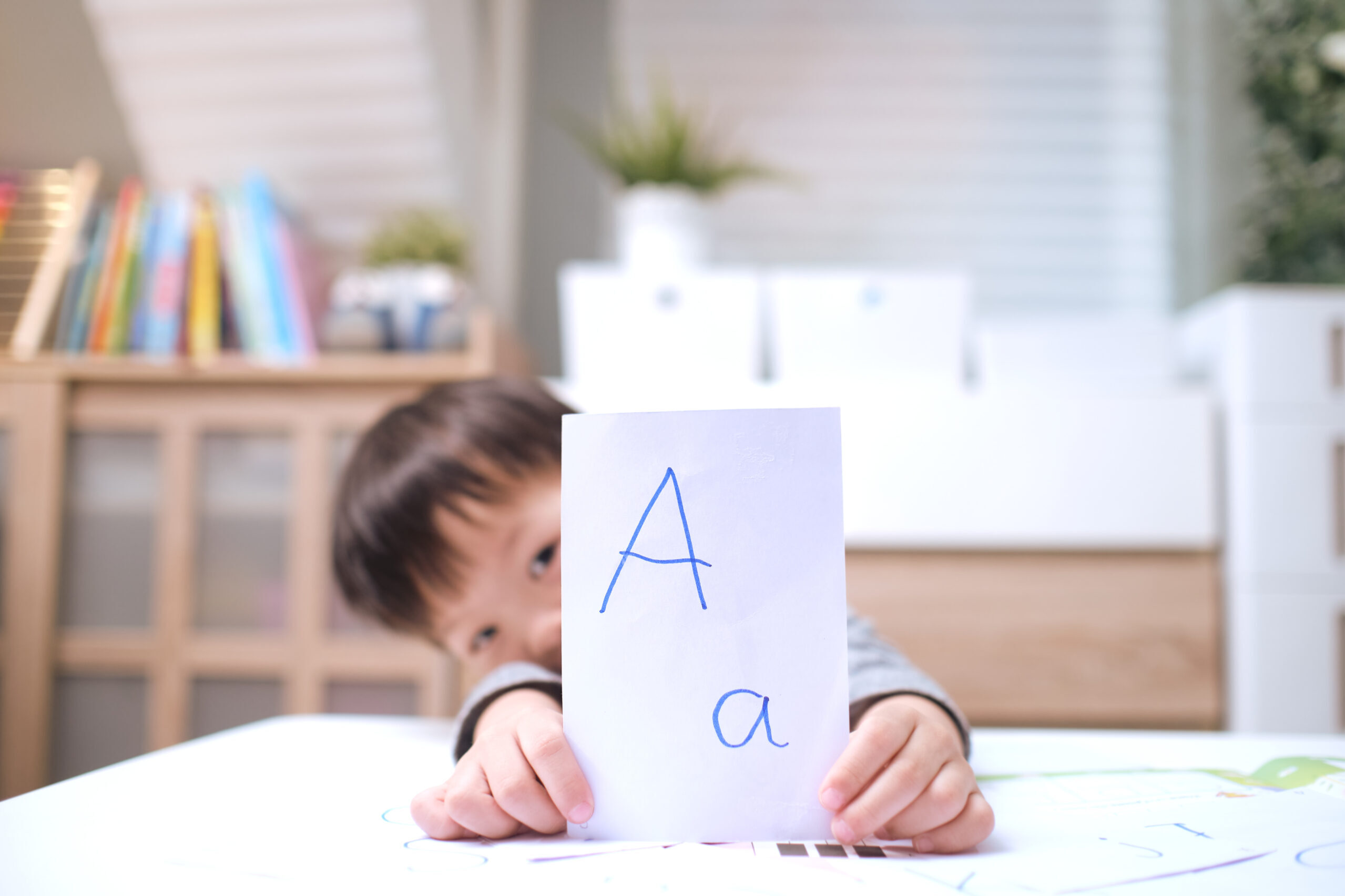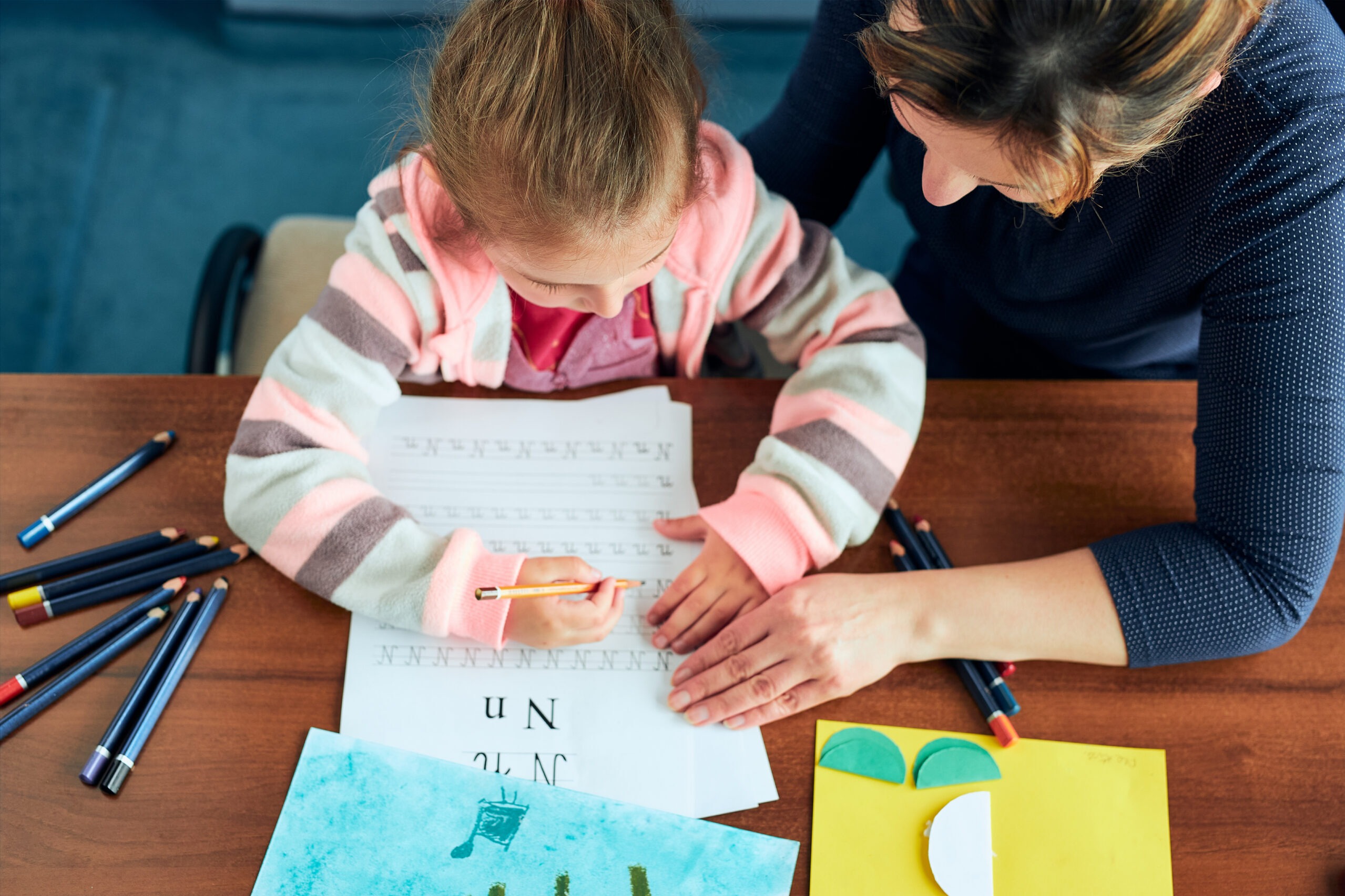Writing, Spelling & Handwriting Intervention
Our writing program is designed for students who haven’t mastered foundational writing skills. Our Spelling program uses specific strategies that encourage students to think their way through spelling rather than to memorize weekly word lists. For handwriting, we use developmentally appropriate instructional methods to enable children to master this skill.

Writing
Our Writing 1 Program is designed for students who haven’t mastered foundational writing skills. Students learn to construct simple sentences by reporting on what a picture shows. They learn that a sentence has two parts, the part that names and the part that tells more. Students learn to identify sentences and edit short paragraphs, indicating the part of a sentence that names and the part that tells more. Students write sentences by naming a person or thing and telling what that person or thing did. As the program develops, students learn to tell the main thing a person did and to construct
paragraphs for a sequence of pictures. At the end of this writing program, students can write a paragraph that describes a sequence of related actions using simple declarative sentences, punctuate sentences correctly, write consistently in the simple past tense, and write paragraphs that include sufficient detail and stay on topic.
Our Writing 2 program is designed for students who can construct a basic paragraph, but who have problems with clarity, are unable to punctuate quotes and other sentence types correctly, and use a narrow variety of sentence forms. Writing exercises begin with simple one-paragraph assignments, then increase gradually to two, three and more
paragraphs. Students learn to infer important details that must have happened between pictures in a sequence. By the end of Writing 2, students can write a multi-paragraph
narrative that is: written clearly (using clear pronoun referents and including details necessary for clarity) uses a variety of sentence types, and includes correctly
punctuated direct quotes.
Our final Writing Program is designed for students in middle school and high school who are at risk of failing to meet high school graduation requirements in English language Arts. The program consists of lessons designed to teach skills that are essential for learning to write, as well as the complex behaviors needed to compose: narrative passages, stories with a specific theme, descriptive essays, auto biographical sketches
and biographies, responses to literature and persuasive arguments and position papers.

Spelling
Spelling Through Morphographs is designed to teach spelling to older students (4th grade and older). Students learn that words are composed of morphographs, which roughly are prefixes, suffixes, and bases or roots. The program presents rules for combining the morphographs and provides extensive practice in applying these rules. The program uses specific strategies that encourage students to think their way through spelling rather than to memorize weekly word lists. These strategies, combined with repeated practice and application enable students to spell unfamiliar words and to remember familiar words more successfully than they would by using other methods.

Handwriting
Children who master handwriting are better, more creative writers. The earlier we teach children to master handwriting, the more likely they are to succeed in school, and write with speed and ease in all subjects. We use fun, engaging, and developmentally appropriate instructional methods to enable children to master handwriting as an automatic and comfortable skill.
Cursive
Our simple cursive style helps children transition easily from print. Using the same multisensory techniques, the cursive program begins in third grade when children have better developed
hand-eye coordination
